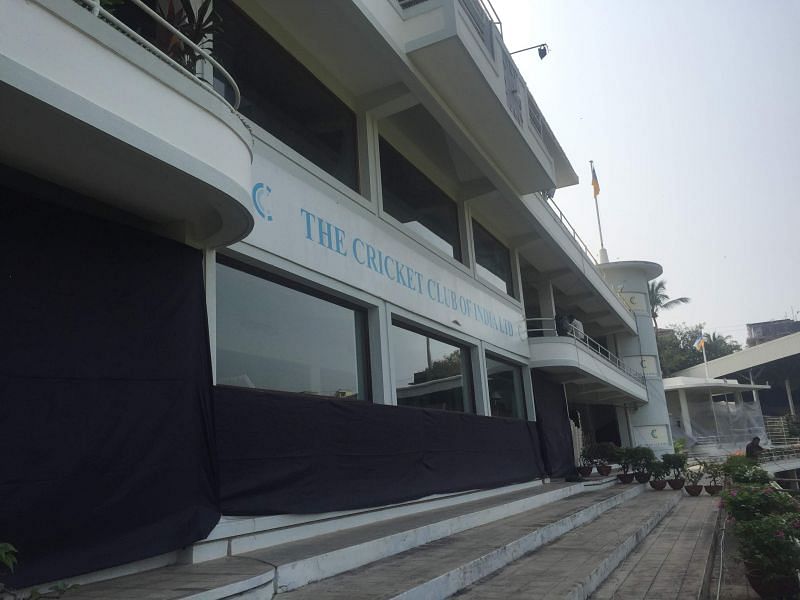
5 memorable Tests at the iconic Brabourne Stadium
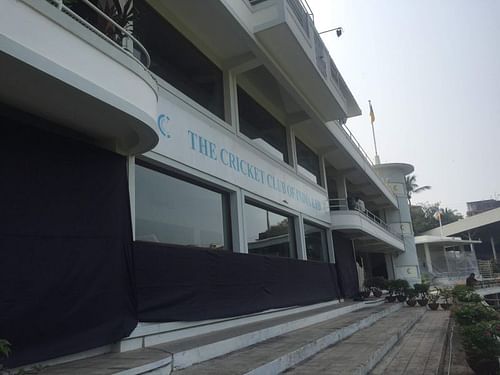
"Yeh jangal mein chaman banayenge and Lord's will look mediocre." (We'll build a monument in this jungle and Lord's will look mediocre.)
These were the words of the Maharaja of Patiala to Maharawal Lakshman Singhji (as stated by Raj Singh Dungarpur in the foreword of a book to commemorate 75 years of the Cricket Club of India). Legacy has it that the Maharaja was denied entry into a separate enclosure during a match at the Bombay Gymkhana, and this prompted him to create a facility without any such practice. Thus, the Cricket Club of India (CCI) came into existence in 1933 at what later became known as the Brabourne Stadium.
The dream of having the stadium was realised with the laying of the foundation stone by Lord Brabourne, the then governor of Bombay on May 22, 1936. The construction of the Brabourne Stadium was completed a year later. Since then, the stadium has enjoyed the status of a premier cricketing venue in the country until the Wankhede stadium was constructed in 1974 owing to a dispute in allotment of tickets.
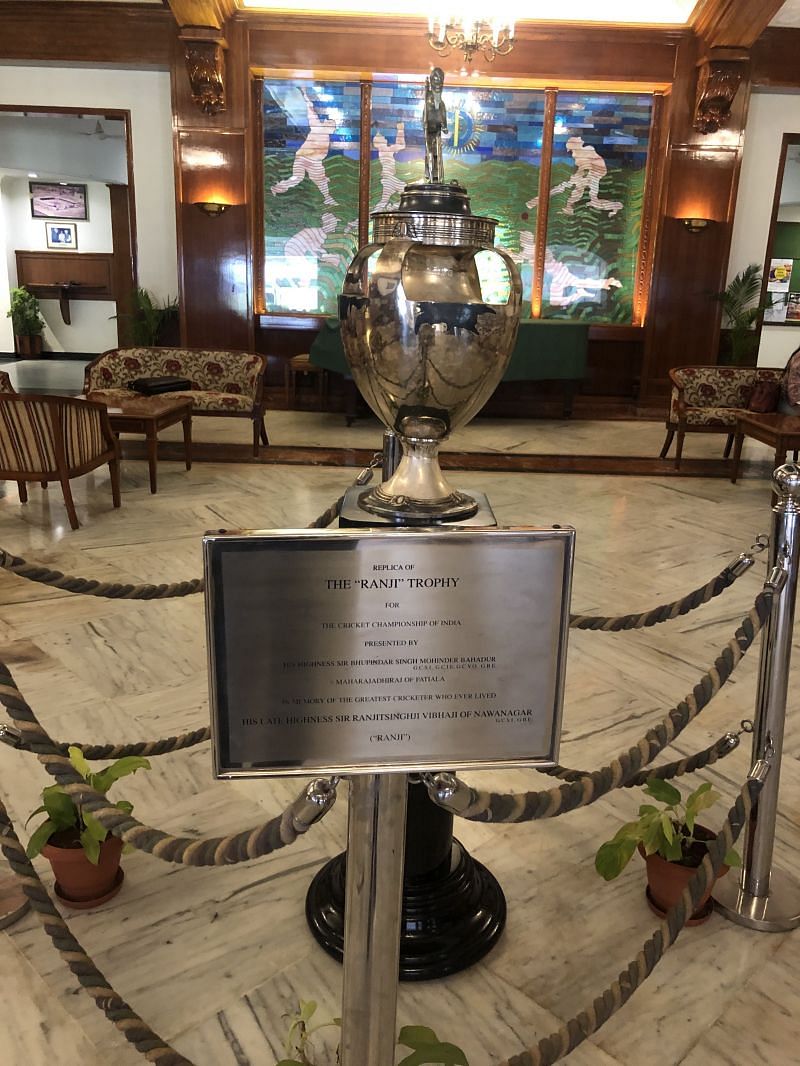
Over the years, each match played on the ground has contributed to the Brabourne's rich history step-by-step. As one enters the main lobby of the Brabourne Stadium, one can see a replica of the Ranji Trophy at the centre. There are photographs of cricketers on display on the walls.
For cricket memorabilia, one can't miss the Polly's bar (after the legendary Indian cricketer Polly Umrigar) on the first floor of the club. The Anandji Dossa Library in the Brabourne Stadium has some of the finest collection of sportsbooks. It seems to have everything for a cricket lover. However, the one thing probably missing at the Brabourne Stadium is a cricket museum, something that even Raj Singh Dungarpur had wanted.

Apart from the significant position that the Brabourne Stadium occupies in Indian cricket, it holds a special place in my heart as well. The cover launch of my first book – 'A Colonel Destined to Lead' took place in the Cooch Behar Room of the CCI at the Brabourne Stadium by Nari Contractor and Madhav Apte.
Coming back to the cricket matches played at the Brabourne Stadium, right from the days of Pentangular to Ranji Trophy, Tests, ODIs and T20s, the stadium has witnessed some of the most exciting matches. Overall, 18 Tests, 9 ODIs and 1 T20I in addition to numerous first-class games have been played at the Brabourne Stadium.
It was at the Brabourne Stadium that Sachin Tendulkar scored his maiden first-class double-century against the Australians in 1998 where Mumbai defeated the visitors by ten wickets in the three-day match. In a first, the master batsman also rang the bell before the start of the India-West Indies ODI in 2018, which was also the last international match played at the Brabourne Stadium.
On that note, we take a look at a few memorable Tests played at the iconic Brabourne Stadium:
Five memorable Tests played at the Brabourne Stadium:
#1: India vs West Indies (1949); Result - Draw
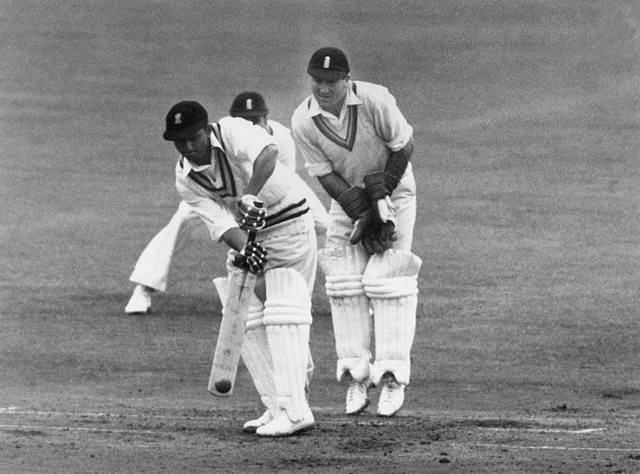
In 1949, the West Indies were leading the five-match Test series 1-0, courtesy a victory in the fourth Test in Madras (now Chennai). This was only the second Test played at the Brabourne Stadium in the said series.
The visiting skipper John Goddard won the toss and elected to bat. Half-centuries by Jeffrey Stollmeyer (85) and Everton Weekes (56) took them to a score of 286 in the first innings. Dattu Phadkar and Vinoo Mankad were the most successful Indian bowlers with four and three wickets, respectively. In response, the home side were bowled out for only 193 as none of the batsmen crossed 50. Vijay Hazare was the top scorer with 40.
In the second innings, opening batsman Allan Rae's 97 and Weekes' 48 ensured that the team from the Caribbean Islands scored a healthy 267. This meant that the Indians were asked to chase down a highly unlikely target of 361 in the fourth innings. Mind you, India had never a won Test before.
The chase for the hosts at the Brabourne Stadium didn't begin well as both the openers were back to the pavilion at the team score of 9. Skipper Lala Amarnath and Rusi Modi began the rearguard action with a partnership of 72 before Amarnath was dismissed. At the end of day four, India were 90 for three and staring at a defeat. But things changed on the fifth day.
The two overnight batsmen, Modi and Vijay Hazare, carried on their partnership till lunch. With a chance of their first-ever Test victory, the Indian batsmen started attacking post-lunch at the Brabourne Stadium. Modi (86) was the fourth wicket to fall as India reached 220. But Hazare went on to score a century, and by the time he was dismissed for 122, India had 285 runs on the board and victory was within sights.
Dattu Phadkar was playing aggressively at one end, and it looked as though he would take India to its maiden Test victory. However, destiny had other plans at the Brabourne Stadium that day. Here's an excerpt from a report of the gripping post-tea session written by SK Gurunathan (as mentioned in The Illustrated History of Indian Cricket):
“Excitement began to mount after tea. Banerjee and Adhikari did not stay long. But Phadkar and Ghulam Ahmed carried on. Six runs more and a minute and a half to go. But the stumps were pulled and the match was left down. The fight had been glorious. Phadkar played valiantly. It was a memorable match. For the excitement it caused towards the close, it still remains the most exciting match India have played so far.”
#2: India vs Pakistan (1952); Result – India won by ten wickets
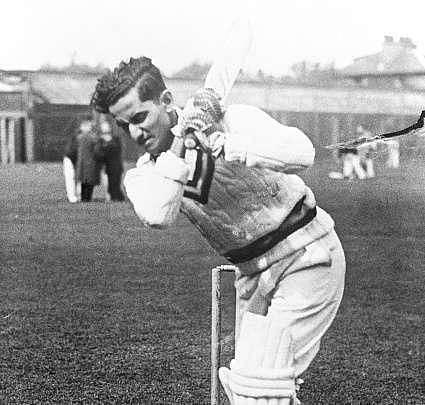
This was the first Test series between the two neighbours, India and Pakistan, and the birth of one of the greatest rivalries on the cricket field. With the series tied at 1-1, the two teams reached Bombay (now Mumbai). Pakistan won the toss and took first strike at the Brabourne Stadium but were bowled out for just 186 on the first day. The bulk of the wickets were shared between skipper Lala Amarnath (four), Vinoo Mankad (three) and Subhash Gupte (two).
India began strongly with a 55-run opening partnership between debutant Madhav Apte and Vinoo Mankad. Then, Vijay Hazare (146*) and Polly Umrigar (102) took center stage as India declared their innings at 387/4.
With a deficit of 201 runs, Pakistan had their backs against the wall. And despite Hanif Mohammad's 96, Pakistan were able to muster only 242 as Mankad ran through the visitors with figures of 5/72. Gupte too chipped in with three wickets. The hosts reached their modest target of 45 without the loss of any wicket.
With this victory, India took a 2-1 lead in the series. With the next two matches ending as draws, the home team registered their first-ever Test series victory.
#3: India vs Australia (1960); Result – Draw
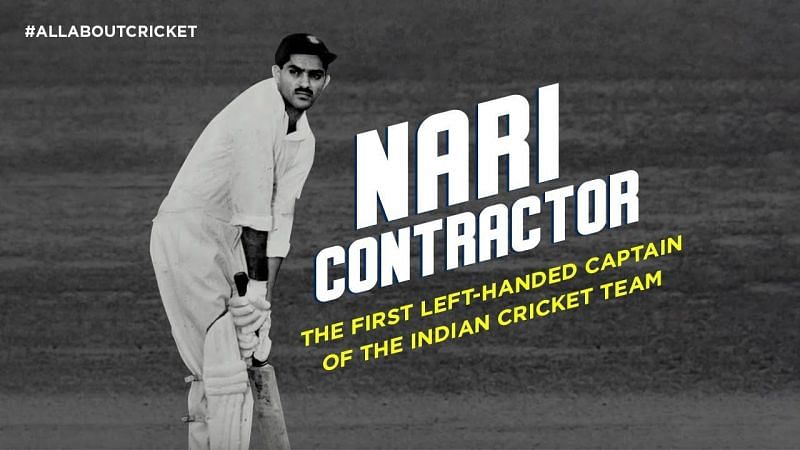
India had arrived at the Brabourne Stadium full of confidence on the back of their first-ever victory over the Aussies in the previous Test in Kanpur in 1960. Skipper Gulabrai Ramchand won the toss and India batted first. Nari Contractor scored 108, and Abbas Ali Baig made a 50 as the home side put up a reasonable score of 289 in their first innings.
The Aussie response was strong. Riding on centuries by Neil Harvey (102) and Norm O'Neill (163), the visitors declared their innings at 387 for 8. Bapu Nadkarni took 6/105 for the Indians.
Trailing by 98 runs, India made a good start with a 95-run opening stand between Pankaj Roy (57) and Contractor (43). But post this, wickets started to fall in a heap, and within no time the Indians had slipped to 112 for 4.
Baig (58) and Ramnath Kenny (55*) got together in a rescue act as India declared their innings at 226 for 5. With not much time left, the Brabourne Test ended in a draw as the Aussies reached 34 for the loss of one wicket in pursuit of 129 runs.
This Test at the Brabourne Stadium is also remembered for another reason. As Baig was making his way to the pavilion at tea on the final day, a young lady jumped over the fence and kissed him on the cheek. On this incident, Baig later said that he was more worried as his parents were watching from the stands.
#4: India vs Australia (1964); Result – India won by two wickets
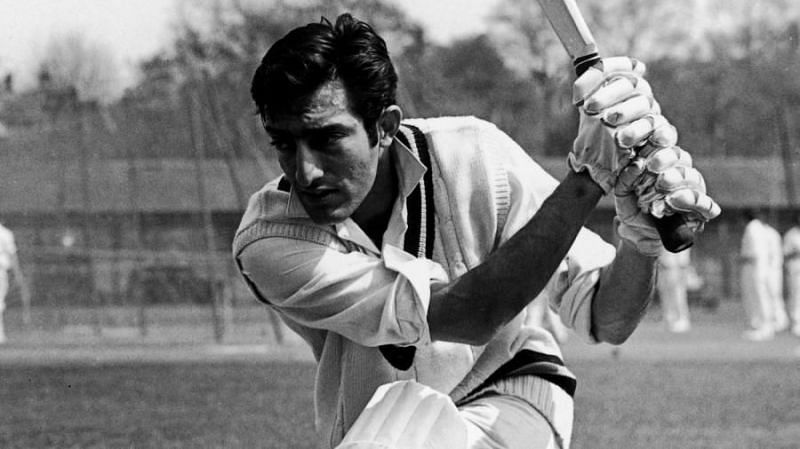
In 1964, India and Australia played their 15th Test match at the Brabourne Stadium. Before this game, India had beaten the visitors only once. So, not much was expected from the hosts who were comprehensively beaten by 139 runs in the first Test of the series in Madras.
After winning the toss, Australia batted first and scored a healthy 320 runs. Peter Burge was the highest scorer of the Australian innings with 80. He was assisted well by Tom Vievers (67) and wicket-keeper Barry Jarman (78). In the bowling department, BS Chandrasekhar returned with figures of 4/50 for India.
MAK Pataudi's 86 was instrumental as India eked out a 21-run first-innings lead. ML Jaisimha (66) and Vijay Manjrekar (59) also scored half-centuries. In their second innings, the Aussies seemed well in control at 246 for 3. That's when Chandra and Bapu Nadkarni got into the act. The duo took four wickets each as the visitors were bowled out for 274, that set a victory target of 254 for India.
It wasn't an easy chase for the home side at the Brabourne Stadium. After a 69-run second-wicket partnership between Dilip Sardesai (56) and Salim Durani (31), India seemed to have lost their way. At 122 for 6, the game seemed all but over. But skipper Pataudi (53) and Vijay Manjrekar (39) had other ideas. They stitched together a seventh-wicket partnership of 93 runs. Chandu Borde remained unbeaten on 30 as India pulled off a memorable win at the Brabourne Stadium.
Chandra, one of the stars of the match and who was slated to come in as the last Indian batsman, later said about that win at the Brabourne Stadium:
“I remember being padded up and terribly nervous during the Borde-Indrajit (KS Indrajitsinhji) stand. I was thrilled I did not have to bat, and that Borde was the hero at the end. The skipper was kind enough, during the victory celebrations, to highlight my role in winning the Test.”
#5: India vs Sri Lanka (2009); Result – India won by an innings and 24 runs
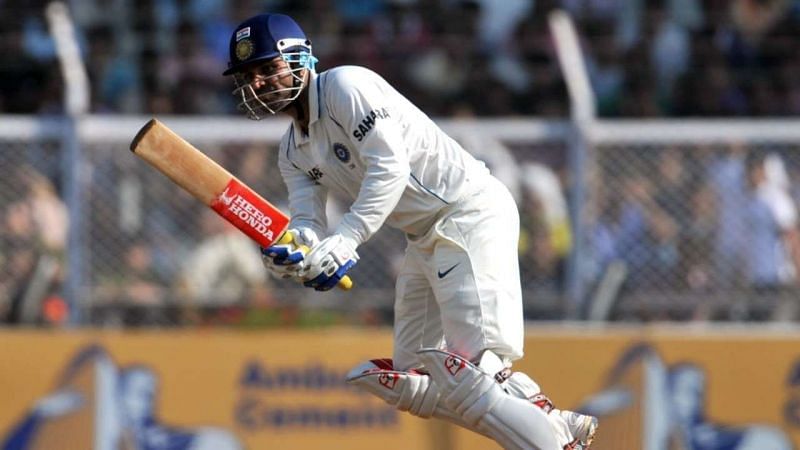
In 2009, Test match cricket returned to the Brabourne Stadium after a gap of 36 years and Virender Sehwag ensured it became a game to remember. Sri Lanka batted first and scored briskly to end day one at 366 for 8. Opener Tillakaratne Dilshan scored a century. On the second day, the visitors were bowled out soon for 393 as Angelo Mathews was run-out for 99.
India's reply was a treat for the Brabourne crowd. Virender Sehwag and Murali Vijay (87) put together a double hundred opening partnership. In came Rahul Dravid (74) and another 200-run plus partnership followed. At the end of day two, India were 443 for one and Sehwag was unbeaten on 284.
A third triple-century seemed to be waiting for Sehwag. However, the fans were left stunned when Muttiah Muralitharan had him caught off his own bowling for 293 as the Nawab of Najafgarh narrowly failed to become the first player in Test history to score three triple hundreds.
Sehwag had racked up his runs in just over six hours, facing 254 deliveries, studding his glittering innings with 40 boundaries and seven sixes. It was demolition of bowling at its ruthless best.
Despite, Sehwag's dismissal, there was to be no respite for the Lankan bowlers. Skipper MS Dhoni scored an unbeaten century, and there were also half-centuries from Sachin Tendulkar (53) as well as VVS Laxman (62). India eventually declared at 726 for 9, scoring at almost 4.5 runs per over primarily due to Sehwag's onslaught.
From there, it was always going to be an uphill task for the island nation. Although, skipper Kumar Sangakara scored 137, the over 300-run deficit always had them under pressure. Zaheer Khan took five wickets as the visitors were bowled out for 309, thus giving the Indians a victory by a margin of an innings and 24 runs at the Brabourne Stadium.